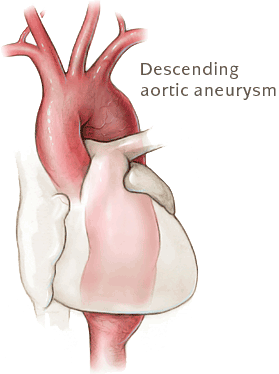
Diagnosed with Cancer? Your two greatest challenges are understanding cancer and understanding possible side effects from chemo and radiation. Knowledge is Power!
Learn about conventional, complementary, and integrative therapies.
Dealing with treatment side effects? Learn about evidence-based therapies to alleviate your symptoms.
Click the orange button to the right to learn more.
- You are here:
- Home »
- Blog »
- side effects ID and prevention »
- Managing my Aortic Aneurysm
Managing my Aortic Aneurysm

I have an aortic aneurysm. I’m not sure where it came from but since I was diagnosed with chemotherapy-induced cardiomyopathy, I have developed a healthy skepticism about the cardiotoxicity of all the aggressive chemo I was prescribed.
Marfan’s Syndrome rums in my family. I have the idea in my head even if I am not formally diagnosed with it, that Marfan’s can affect my heart. And cardiotoxic chemo can negatively affect my heart further.
Ever since my diagnosis of CIC and Afib in late 2010 I have been living a heart healthy lifestyle including the nutritional supplementation below.
I am not saying that I am any sort of health professional nor am I saying that people with aortic aneurysms should not consider conventional therapies listed below.
I am simply explaining what I do, how I am managing my aortic aneurysm.
What are the risks and benefits of conventional aortic aneurysm therapies?
What nutritional supplements are heart healthy?
Several nutritional supplements are believed to support heart health. However, it’s important to note that individual needs may vary, and consulting with a healthcare professional before adding supplements to your routine is recommended. Here are some supplements that are commonly associated with heart health:
- Omega-3 Fatty Acids:
- Found in fish oil supplements, omega-3 fatty acids (EPA and DHA) are known for their cardiovascular benefits. They can help lower blood pressure, reduce triglycerides, and decrease the risk of heart disease.
- Coenzyme Q10 (CoQ10):
- CoQ10 is an antioxidant that plays a crucial role in energy production in cells. It is believed to support heart health by improving energy production in the heart muscle.
- Magnesium:
- Magnesium is essential for heart function, and a deficiency may contribute to cardiovascular issues. It helps regulate blood pressure and supports muscle and nerve function.
- Garlic:
- Garlic supplements are thought to have various cardiovascular benefits, including helping to lower blood pressure and cholesterol levels.
- Fiber Supplements:
- Soluble fiber, such as psyllium, can help lower cholesterol levels by binding to cholesterol and removing it from the body.
- Vitamin D:
- Vitamin D deficiency has been linked to an increased risk of heart disease. While sunlight is a natural source, supplements may be necessary, especially for individuals with limited sun exposure.
- Vitamin K2:
- Vitamin K2 is essential for proper blood clotting and calcium metabolism. Some studies suggest that it may help prevent arterial calcification.
- Folic Acid (Vitamin B9):
- Folic acid may help lower levels of homocysteine, an amino acid associated with an increased risk of heart disease.
- L-Carnitine:
- L-Carnitine is involved in the transportation of fatty acids into cells for energy production and may support cardiovascular health.
- Green Tea Extract:
- Green tea contains antioxidants called catechins, which may have heart-protective effects, such as reducing cholesterol and improving blood vessel function.
Are you a cancer survivor? Are you managing any long-term or late stage side effects from your cancer treatments? Let me know- David.PeopleBeatingCancer@gmail.com
Thanks,
David Emerson
- Cancer Survivor
- Cancer Coach
- Director PeopleBeatingCancer
Treatment of thoracic aortic aneurysm
“The diameter of thoracic aortic aneurysm (AA) is at least 1.5 times that of a normal thoracic aorta (1).
- Sixty percent of thoracic AAs occur in the aortic root and/or the ascending aorta,
- 40% occur in the descending aorta,
- 10% occur in the aortic arch, and
- 10% occur in the thoracoabdominal aorta (2).
Patients with thoracic AA are at increased risk for aortic dissection if they have high blood pressure, especially not controlled, dyslipidemia, smoking, use of cocaine and other stimulants which increase aortic wall stress, weight lifting, trauma, aortic coarctation, pheochromocytoma, and disorders with abnormalities of the aortic media (3).
Other causes for thoracic aortic dissection are pregnancy, polycystic renal disease, chronic use of corticosteroids or immunosuppressant drugs, and aortic wall infections (3)…
If there are symptoms suggesting thoracic AA expansion, surgical intervention should be considered. If the ascending thoracic aorta or aortic sinus diameter is 5.5 cm or more in an asymptomatic surgical candidate who has a degenerative thoracic AA, chronic aortic dissection, intramural hematoma, penetrating atherosclerotic ulcer, mycotic aneurysm, or pseudoaneurysm, surgery should be performed (3).
Asymptomatic persons with genetic conditions such as Marfan’s syndromes should have elective surgery if their diameters are 4.0 to 5.0 cm depending on the disorder to prevent acute dissection or rupture (3,15,16)…
Asymptomatic persons with Marfan’s syndrome should be treated with surgical intervention if their ascending thoracic aortic diameter is 5.0 cm or more and with <5.0 cm if there is a family history of dissection or an increase in ascending thoracic aortic diameter greater than 0.5 cm per year (3)…”


